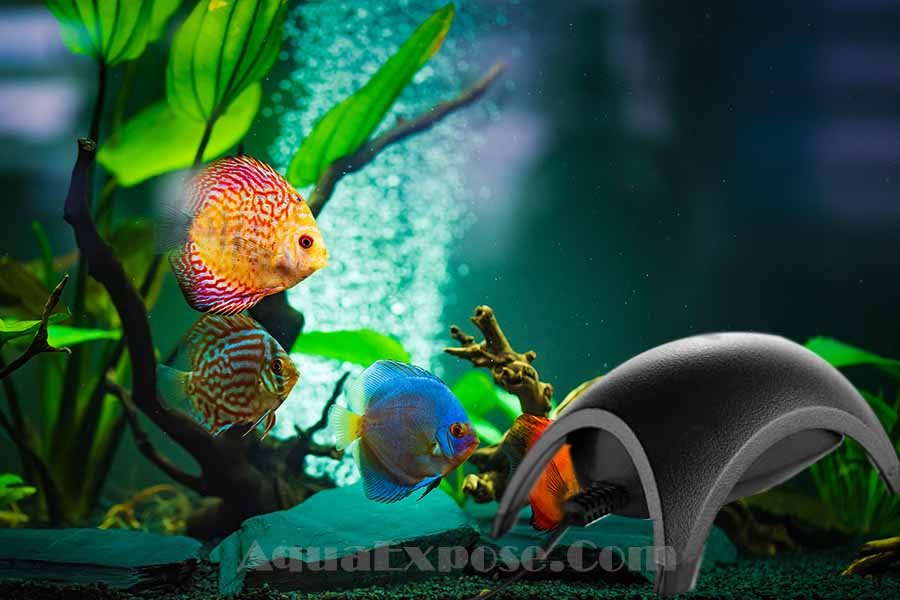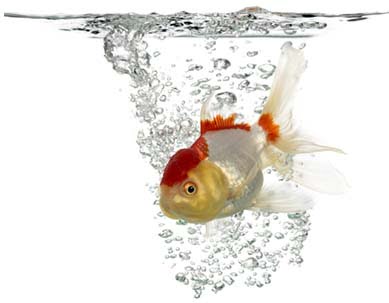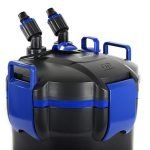Do I Need An Air Pump For My Fish Tank? An Air Bubbler Could be A Great Asset for Your Aquarium If You Add It!

What do you think you need an Air Pump for your fish tank? Not necessarily, but they offer a wide number of advantages that justify the cost. I did some digging about it and was thinking! In the remainder of the article, I’ll explain the reason why!
Have you ever gone into an aquarium shop and been instantly mesmerized by the bubbles bubbling inside an aquarium? These bubbles that you see floating around are created by an addition to the aquarium known as an air pump.
An air pump is used to ensure proper air circulation in your aquarium’s water. It can function as a filter and provide an additional gaseous exchange to bring in more oxygen into your tank. Some filters even require air pumps to function. In short, air pumps work for a variety of purposes.
But it is often debated whether or not it is necessary to install an air pump. The question you will often hear is: Do I need an air pump for my fish tank? The answer is, no, you don’t always need an air pump for your fish tank. But in some cases, it might prove to be necessary to install one.
Let’s go through the importance of its existence in your tank inhabitants’ lives and its function to help you understand whether or not you need an air pump.
Can Fish Live Without An Air Pump?
Yes, fish can live without an air pump.
Since fish receive oxygen by extracting this from the water using their gills, an air pump is required to re-supply the oxygen absorbed from the water. If not, the oxygen in the water will deplete over time, placing your fish at grave risk.
However, it’s important to remember that air pumps are not working to provide oxygen in the aquarium directly. They only promote water circulation, thereby increasing the flow of oxygen.
Fortunately, there are a few ways to oxygenate your water tank without the air pump. It means your fish can thrive without the need for an air pump as they are not completely reliant on it.
Instances where your fish might need an air pump to survive:
- If you have too many fish in your tank,
- If you are not using any other method to make sure the air circulates properly.
Do Aquarium Plants Need Air Pump?
Aquarium plants need oxygen to survive. And the main purpose of having an air pump is to increase the oxygen level in your aquarium. Even plants that need the usage of carbon dioxide for growth also need oxygen. However, that doesn’t mean your aquarium plants will necessarily need an air pump to survive.
As long as your aquarium has an optimal level of oxygen and air circulation, your plants will do fine without any air pump. But if your aquarium has less oxygen or air circulation, then your aquarium plants will surely need a pump.
What Do Aquarium Air Pumps Do?

The air pump has various functions that range from aesthetics to necessity. Some buy it for the beauty and bubble it brings to an aquarium. Some buy it because they need to heal an ill fish. That says how much air pumps contribute to various functions, such as:
1. Increasing Aquarium’s Surface Agitation
Surface agitation is important for maintaining a healthy aquarium since gaseous exchange occurs at the top surface of the water. If your aquarium doesn’t have surface agitation, oxygen sitting on the water’s surface cannot enter the water. Any carbon dioxide produced in the water, on the other hand, can not escape.
You can generate surface agitation if you install an air pump with air stones or another sort of display for the air tubes. The air pump creates a lot of air bubbles. So when the air bubbles hit the top and burst, this help to expel carbon dioxide from the tank, which is subsequently exchanged with the oxygen from outside the tank.
Air pumps can be very noisy, but you can always get an air pump known for its quiet operation by spending an extra few bucks.
An alternative approach to assure adequate surface agitation can be: If you place the power filter a little above the aquarium’s water level, which will enable the air to flow and circulate the water not only in the middle of the aquarium but also at the surface level. These are also very quiet compared to an air pump.
Note: some plants need CO2 to be added for healthy growth. If you are using carbon dioxide (CO2) for this purpose, operating an air pump will only waste two products at once.
So in these cases, you should operate the air pump at night for air circulation, and during the day, the pump should be powered off as that’s the time plants need carbon dioxide.
Can Fish Live Without Air Bubbles?
As mentioned before, air bubbles are necessary to break through the water’s surface level so the carbon dioxide produced by the aquarium inhabitants can be replaced by oxygen from outside of the tank. Without this oxygen and carbon dioxide exchange, your fish and plants will suffer from the lack of oxygen and might even die in the worst-case scenarios.
2. Increasing The Aesthetics Of The Aquarium
You may install a variety of trinkets that operate with the air pump to provide personality and a motif to an aquarium, such as a volcano, and even artificial coral, to bring extra spice and creativity to the tank. One of the famous accessories associated with the pump is the treasure boxes that open up and close with the pressure created by the pump.
Such decor is indeed fascinating and entertaining to look at. What’s more, is that your fish will also appreciate the movements. You will see them swimming around and playing with those decorations and the bubbles.
3. Increasing Oxygen Levels In The Aquarium

Increased surface agitation helps in gas circulation and offers more oxygen, which is one of the most significant advantages of the air pump. What’s more, is that surface agitation isn’t the only way to get oxygen into your tank’s water.
Use an air pump combined with an air stone. It will produce a large number of tiny oxygen bubbles that will immediately infuse a large quantity of oxygen into the aquarium.
This additional oxygen will benefit all the creatures inhabiting the aquarium, along with the fish, plants, and beneficial microorganisms that are critical for the effective maintenance of your aquarium. The more oxygen you have in your aquarium, the better it is for the tank.
The air pump works by the immediate incorporation of beneficial bacteria into the quarantine tanks from the filter media. But it is not the only advantage of employing an air pump in these tanks.
4. Balancing Oxygen Levels In Quarantine Tanks
One of the most commonly advised treatments for a fish ailment is to increase the temperature significantly to aid in the battle against whatever infection is afflicting any fish.
But as the temperature of the water increases, it results in decreased oxygen levels, which is an issue. So, when caring for sick fish, you must ensure that they are getting enough oxygen to recover completely.
Installing an air pump in the quarantine tank or hospital tank would help you raise the water’s temperature to combat infection while ensuring your aquarium water is adequately oxygenated.
How Long Can Fish Survive With Low Oxygen?
Different fish can survive for a different length of time, depending on the fish you have. For example, some fish will die within two days, and then there are goldfish and some wild species that can live up to five months without even breathing an ounce of oxygen.
But you do not want to take that chance of low oxygen with your fish. Because they can develop hypoxia, or they won’t be able to produce any energy and eventually die.
Here are some signs of low oxygen in your tank:
- The gills of fish will move faster than normal.
- The resting time of fish will be getting longer, and their energy will be less.
- Your fish often swim on the surface of the water and try to gulp water. Because that means they are struggling to get enough oxygen.
5. Enabling Sponge Filters

Sponge filters are extremely inexpensive, and effective, and serve as breeding grounds for good bacteria. These filters require the installation of air pumps because they do not have motors and cannot pull water into them on their own. So they rely on the upward force of an air pump to propel water from the aquarium.
The air pushed the water upwards, causing drag and pulling in most water from the bottom. As the pulled water passes through the sponge, beneficial bacteria begin growing on the sponges. In that way, it ensures bacteria break down the ammonia inside the tank.
What Should You Consider When Buying an Air Pump?

If you have decided to buy an air pump for your aquarium, make sure you buy it wisely. You don’t want to invest in something that does half the job of what it’s intended to be. Make sure:
- You buy a quiet pump if you are not a fan of noisy air pumps or a DIY soundproof box for air pumps.
- An air pump that has adequate airflow capacity to support your aquarium size.
- You buy a return valve that will stop the hose/tubing from working as a siphon that pulls out the water from the tank.
How To Use An Aquarium Air Pump?
To use the aquarium air pump, you need to install it first. For installation:
- First, connect the pump with the included air tubing. The air tubing will go inside the tank while the pump itself remains outside. The tubing will work as the medium to move air inside the tank from the pump.
- Then install all the check valves. If the air pump fails or stops working, water will stop seeping out of the aquarium.
- You can install an air valve that will control how much air goes into your aquarium.
- If you have a large tank, install a T-splitter to split the airline. It will help you flow air from two different positions in the aquarium. If you have a large or more than one tank, then you may use a Commercial Air Pump.
- Attach air stones, ornaments, or devices to the tubing.
The installation is finished. Now you need to connect the air pump to the power supply. Then it’s ready to use.
What’s The Best Aquarium Air Pump?
The best aquarium pump for you depends on the aquarist. But no aquarist can resist a quiet and inexpensive aquarium. Keeping these two things in mind, one of the best aquarium pumps is the Tetra Whisper.
The Tetra Whisper comes in a variety of capacities. For example, they have a range of 10 gallons to 100 gallons to fit any tank’s needs. One thing to keep in mind is that, if you’d like to have extra oxygenation, you’ll need to buy additional tubing as well as air stones.
But some people prefer the air pumps that come with everything. For them, the best option is the Fluval aquarium air pump. Because it comes with everything you need in its package. This air pump is less expensive than the Tetra Whisper, and it has a 1-year warranty.
Frequently Asked Question
Q: Where is an air pump kept inside the aquarium or outside the aquarium?
An air pump is not kept inside the aquarium. Only the silicon pipe will go inside the tank, and you can hide the pump behind the tank or in a cabinet underneath the tank.
Q: Do I need to keep the air pump on 24/7?
No! Running an air pump for four hours is sufficient for proper air circulation. But you can keep the air pump on for half of the day to avoid any tension.
Q: Does an air pump disturb the fish’s usual movements?
No air pumps will disturb your fish anyway.
Q: Do I need to connect my airstone with an air pump?
Yes, you have to connect your airstone with an air pump using an airline or tube.
Q: Does an air pump move water? Do they make water flow into the aquarium?
A: Air pumps use air to force water through and produce bubbles and cause water movement. On the other hand, using the Powerhead or WaveMaker is the best way to perfect water flow in your Fish Tank. Jebao wave maker models are also recommended.
Q: Are all air pumps noisy?
A: Air pumps tend to be noisy, but some quieter versions of air pumps are available on the market.
Q: Do I Need An Air Pump For My Fish Tank?
A: If you read this article, you will realize the answer already! Thanks for reading.
Q: How to increase oxygen in a fish tank label in a fish tank?
A: Using Air Pump, Fountain, Power Filter, Living Plants, etc will help to increase the oxygen label in your aquarium. Also, our other article, “the way of increasing oxygen labels,” can make your scene.
Conclusion
Knowing the functions of air pumps and whether or not your tank’s inhabitants need them to survive surely sheds light on the necessity of an air pump. So now you tell me, do I need an air pump for my fish tank? Let me assume your answer. It depends on my tank’s fish, plants, and the filters I am using.
That’s right. Although the addition of an air pump is great, it doesn’t harm anything if we don’t install any air pumps unless your tank is facing a lack of oxygen. So look for the signs of lack of oxygen. If you see any, don’t give a second thought to investing in an air pump.

